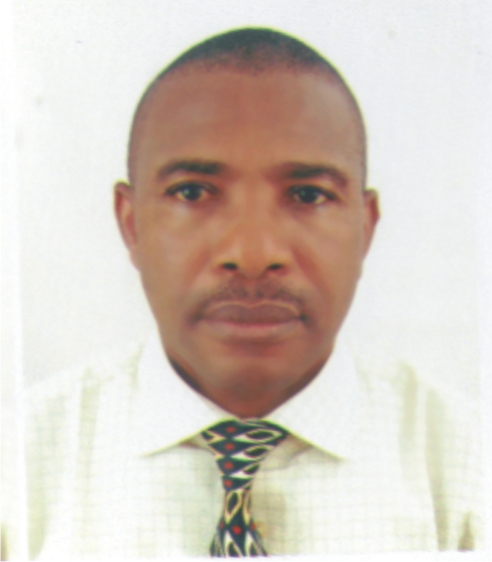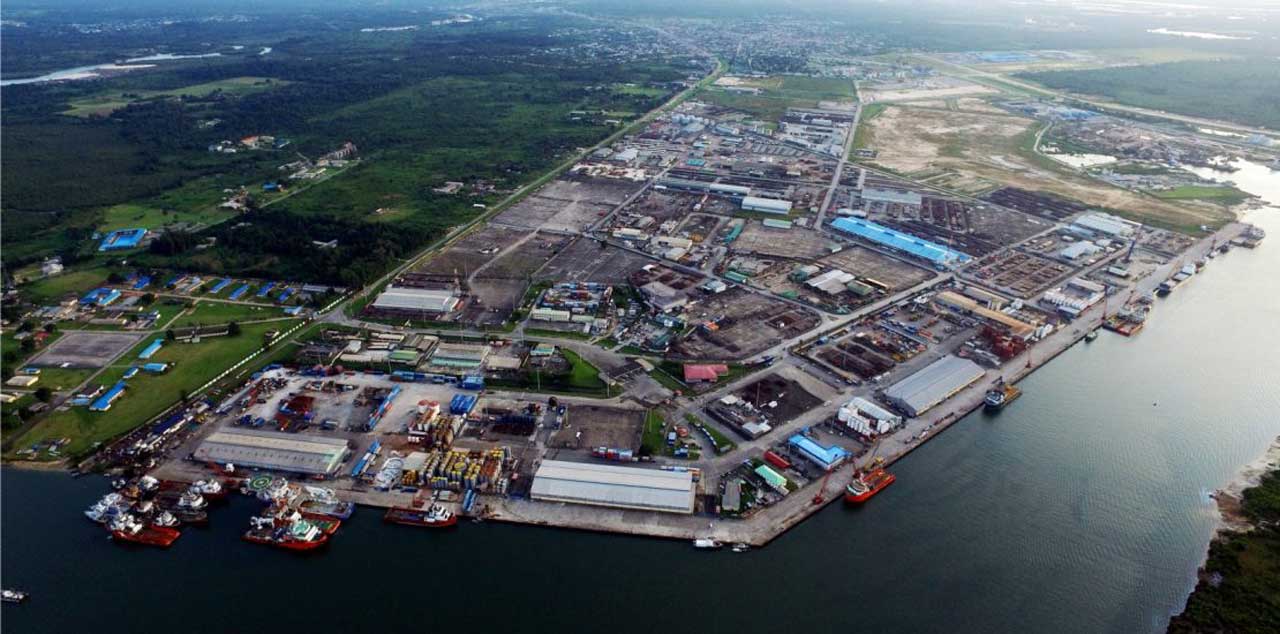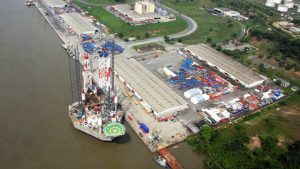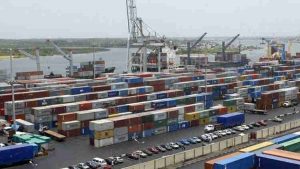Reopening of Eastern ports: The undercurrents at play

July 13, 20202.2K views0 comments
- Rivers-Bayelsa Shippers Association 2014 technical document
- Amaechi moved to get Presidency, NPA approval
- Lagos ports continued congestion provided the opportunity
- Onne Port received first-ever Maersk vessel, Calabar got first PMS shipload in 30 years
- Eastern ports are key components of 2004 Nigeria-Chad bilateral agreement
- Customs’ new high tariffs may cause the ports to relapse

CREDITS: The Guardian Nigeria
THE RECENT REACTIVATION of maritime business in Nigeria’s Eastern ports, still in its early days, had come from underneath a series of undercurrents that had been at play in the last five years, investigations by Business
A.M. in the last two weeks have revealed. Like they say, ‘opportunity meets preparation,’ the seven seaports in
the old Eastern Region may just be hitting an opportunity trajectory that would lead to their revamp after more than three decades in the doldrums of maritime business.
The Eastern ports are: Port Harcourt Port (Area 1), by far the oldest, built around 1913; Onne Port, also called
the OGFZ [Oil & Gas Free Zone] or Intels Port; Warri Port; the Federal Lighter Terminal (FLT) and its offshore
component – Federal Ocean Terminal (FOT); Calabar Port and Onitsha Port.
For several years, these ports have witnessed typically low cargo throughput due to alleged Federal Government policy approving all imports, including petroleum products, to be channelled through the Lagos ports. Today, the south-west ports have become sorely congested, spilling into all precincts, including Apapa, which has been completely devastated as a result of trucks and tankers making entry and exit into it impossible.
Business A.M. was told exclusively, in the cause of its investigations, by some key persons who have been in the vanguard of getting the ports revived, thereby boosting maritime business in the region with its attendant economies of scale, that way back in 2014, the Rivers Bayelsa chapter of Nigeria Shippers Association (NSA),
wrote a technical document to the Nigerian Shippers Council (NSC) on practical steps to transforming the
ports.
The document spelled out the problems of the Eastern ports, which majorly dwelt around low patronage, clearly non-visible routine maintenance, including dredging by the regulatory body – the Nigeria Ports Authority (NPA). Examples abound: five of Port Harcourt Port’s eight berthing quays were not repaired for nearly 20 years until they eventually broke down irretrievably.
Today, they need outright reconstruction. Calabar’s 87 km (41 nautical miles) seaport channel inlet has not been dredged for over 15 years. When it was done about 2005/2006, it was a poorly executed job. The dredging company scooped silted materials from the channel and dumped same just meters away in the same
sea.

CREDITS: The Guardian
It was only a matter of weeks before the water waves brought the materials back into the channel. Warri is not different from Calabar’s case; while Onitsha, an inland port into the south-east states, has been allowed to rot away without the slightest feeling for the region’s economic interest.
The FLT and FOT in Onne area are far from active. Ofon Udofia, an export expert, who is also the chief executive of Institute of Export Operations and Management (IEOM) Nigeria and former president of Rivers-Bayelsa NSA, told
Business A.M. in Port Harcourt that the association’s working document on Eastern Ports’ transformation had been with the NSC for impending implementation until the most recent moves.
Additionally, he said the personal intervention of Chibuike Rotimi Amaechi, the minister of Transportation brought about the new moves to revive the hitherto moribund ports. However, a strange development was to help the reopening of the Eastern ports – it was the continued congestion of Lagos ports, which by some uncanny policy design would never decongest – until the counterparts in the Eastern flank are approved to begin to receive cargo throughput.
But like the saying goes, ‘one man’s poison is another’s meat,’ and it clearly applies in this case – that is, the congestion which has been Lagos ports’ poison for years – is turning out to become the meat of the Eastern port.
Unable to deal satisfactorily with the fallouts of the congestion in the Lagos ports, it was pronto! And the
federal government’s approval arrived, throwing the Eastern ports open for business. A Maersk Line vessel, the first ever, sailed directly from China (Far East) and berthed at the West African Container Terminal (WACT) at the Onne Port, near Port Harcourt.
The WACT received the first Maersk’s direct service container ship from the Far East at the Onne Port. The vessel, a gearless 4,800 24-feet TEU capacity carrier, sailed into Onne Port with Maersk Line flagship under its FEW3 service, thereby becoming the first Maersk vessel to call at Onne Port without first calling at any Lagos port.
Noah Sheriff, WACT’s commercial manager, said: “It is important to note that this new service will call WACT Onne weekly, coupled with the benefit of a short transit time for cargo coming from the Far East. This is a product many customers have been asking, and we at WACT shall ensure that we turn these vessels around quickly.”
This was followed by a barrage of four vessels sailing into the largely idle Calabar Port. For the first time in 30
years, it received four shiploads of PMS by Ecomarine. The port’s neglect has kept its quay and draft suffering
from siltation – the biggest amongst the nation’s seaports along with Warri Port. But such wanton neglect for
30 years appears to stand logic on its head, given the fact that the Eastern Ports provide the shortest vessel
transit time from the Far East, which was confirmed by WACT’s manager Sheriff Udofia of IEOM and Friday Udoh, chief economist at Institute of Chartered Economists of Nigeria, South-south zone.
The new moves are, however, attributed to the federal government’s decision to harness the maritime industry for effective contribution to the nation’s economy, launch of a policy aimed at transforming the Eastern ports for increased productivity and patronage, and to decongest the Lagos ports. Other components are said to include: a N13 billion federal executive council (FEC) approval for dredging of the Escravos Bar of Warri Port and replacement of
navigational aids to which the former constitutes the latest portion of the project budget.
Another is a $3.9 billion FEC approval for the Warri deep seaport. Some maritime stakeholders spoken to, though applauding the programme, were quick to advise the central government to ensure that it finishes up the project within its specified time line.
However, Friday Udoh, a chartered economist, argues that the implication here is that Warri Port could hardly
generate a yearly revenue to cover this particular component of operating expenditure (OpEx). According to him, under this circumstance, the OpEx cost is going to be higher than revenue.
“In my position, I see this as uneconomical further allocation of fund to the major dredging of the port’s access
channel. Rather, the project should be re-designated to serve the inland and coastal transportation needs of the
areas, and for Roll on/ Roll off vessels to be made to ply the shallow waters. Hence, the management assets and
regulatory responsibility should be transferred to the National Inland Waterways Authority (NIWA),” Udoh said in a response note to Business A.M.’s inquiries.
This newspaper also gathered from other people who are in knowledgeable about the happenings, that it also took Amaechi, the transportation minister’s personal interactions with some federal executive council members, as well as talks with the bosses of Nigeria Shippers Council and NPA to get the final approval for the Eastern Ports reactivation.
For the efforts, some key followers of the transportation minister have gone to town hyping him and the ruling party, APC, for registering a credible milestone. Eze Chukwuemeka Eze, a de facto APC spokesman in the south-south, congratulated President Muhammadu Buhari, Amaechi and Hadiza Bala-Usman, NPA’s managing director over reopening
the Eastern ports. He said President Buhari’s move to approve expansion of the Eastern ports was “a milestone in the development of ports to boost economic activities in the area through international trade.
“With the historical berthing of the first Maersk Lines service straight from China to Onne, Port Harcourt, and Calabar Port taking delivery of four shiploads of PMS, first in 30 years, demonstrates a confirmation of Buhari’s love for the Niger Delta. As well, the feat by NPA’s current boss, Hadiza Bala-Usman refers to breaking a jinx, and proving herself an astute administrator,” Eze said.
He recalled that the NPA under her management, extended mobile harbour cranes at the cost of N3 billion to upgrade the Onne Port. Hence, Maersk Line management has announced that its containers from China to Nigeria’s Niger/Delta and South-East will now go directly to Onne Port. However, these are yet baby steps taken by the federal government and its agencies – NPA and Shippers Council to get the idle multi-billion-naira revenue capacity seven Eastern ports out of the woods.
Several experts who spoke with Business A.M. spoke about more things that are still needed to be done to get the ports functioning again. For instance, Udoh said that the federal government through the NPA should upgrade the Eastern ports, to be able to perform the major component of a 2004 bilateral agreement between Nigeria and Chad, a landlocked country.
The agreement was for Nigeria’s Eastern ports to service the West African francophone country via the Port Autonome de Douala in Cameroon. Any port within the Eastern ports (Calabar, Port Harcourt, Warri, Onitsha, Onne, FLT, FOT) can serve Chad covering a distance of less than 1,460 km from any of the ports.
Business A.M. was told by some people knowledgeable on the Nigeria-Chad agreement, that Chad and Central African Republic, another landlocked country, all depend on Cameroon’s Douala Port Autonome for all their maritime business (imports and exports), which covers a distance of 1,559 km against 1,460 km if they were to use any of Nigeria’s Eastern ports.

CREDITS: The Sun
Perhaps, the shorter distance via Nigeria’ eastern ports must have informed Chad’s decision to enter into the bilateral agreement with Nigeria – which sadly the rich ECOWAS neighbour has not been able to honour.
To get the Eastern ports to carry out the bilateral agreement terms include: reconstructing the damaged five Port Harcourt Port berths; dredging and de-silting the Warri and Calabar ports. Warri Port is already receiving attention via the N13 billion dredging fund approved by the federal government. But Calabar Port is yet to receive attention. At least nothing was said about it in the recent government approvals. With a current draft of 6.9 metres, it is said to be economically unviable to operate except with routine dredging to deepen its draft to between 9.5 metres and 10 metres at MLWS (mean low water spring, the average spring tide/low-water levels), and a bottom width of 150 metres.
A draft depth of 12.5 metres and bottom width of 140 metres is said to be able to accommodate 20,000 DWT to 25,000 DWT cargo ships, which is the current global trend. Dredging and maintenance yearly or every two years of the 41 nautical miles access channel of the Calabar Port, which traverses the Bakassi flat and TomShot Islands to the open sea (Atlantic Ocean) is tied to an annual cost of between N49 billion and N59 billion, depending on the level of
siltation, Udo told business a.m. By far, all the experts spoken to by this newspaper confirmed that it would be
big business for the Eastern ports with the adjoining towns of Port Harcourt, Aba, Owerri, Umuahia, Enugu, Onitsha, Calabar, Uyo, Eket, among others.
This would also open up employment opportunities for teeming youths in the areas. As the gradual opening up of the Eastern parts creates excitements in the region, especially among businesses, importers and exporters, experts spoken to for this story have, however, registered a complaint about what they see as an emerging unilateral prohibitive tariffs charged by the Customs operating at the Eastern ports.
They say this portends grave danger for the reviving ports, as it would cause them to quickly relapse into poor
patronage – and then bring them right back to old ways. For instance, last year, PTOL, one of the concessionaires
of Terminal ‘B’ of the Port Harcourt Port complained of often paying $50,000 for armed naval guards to escort
its vessels into the port.
